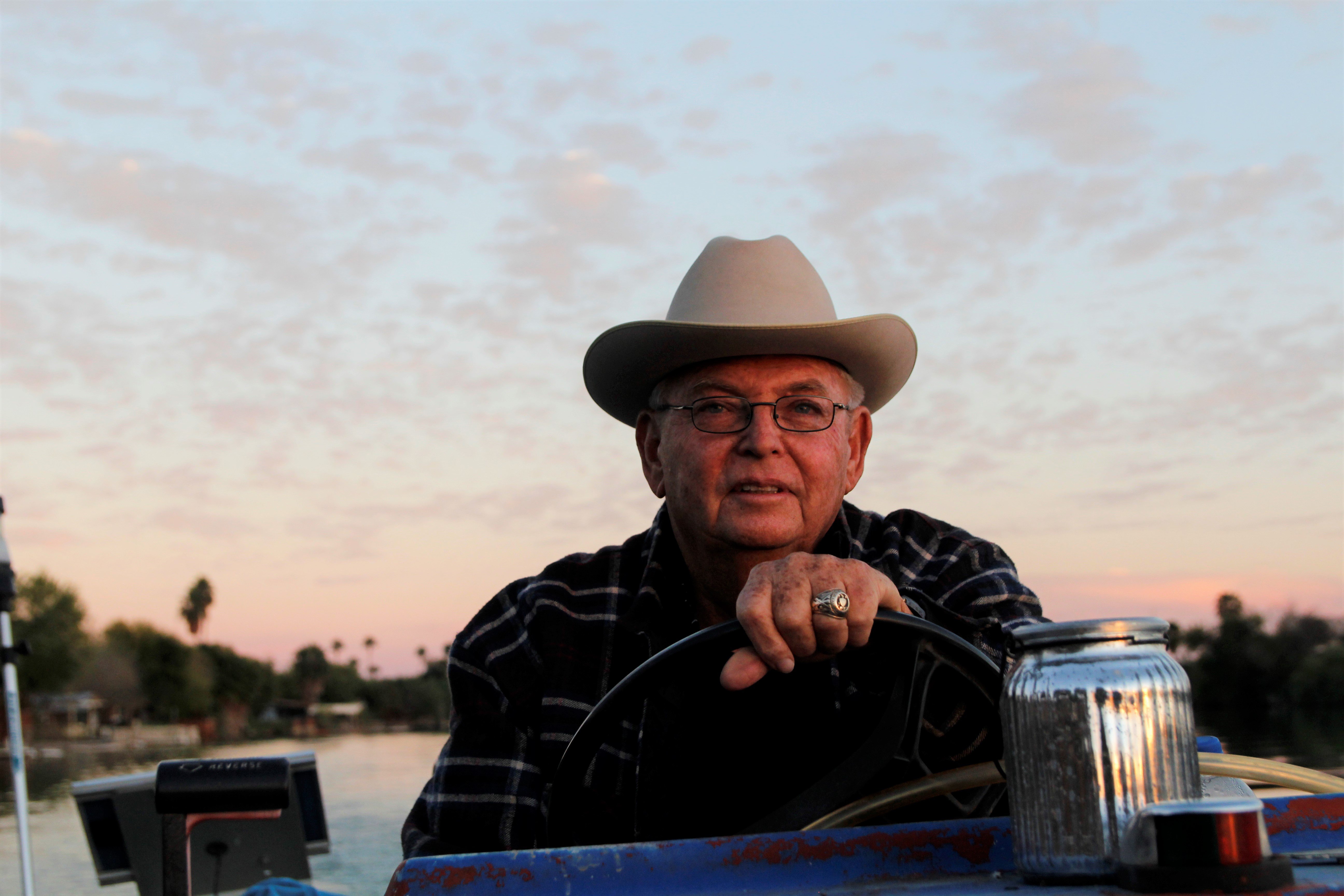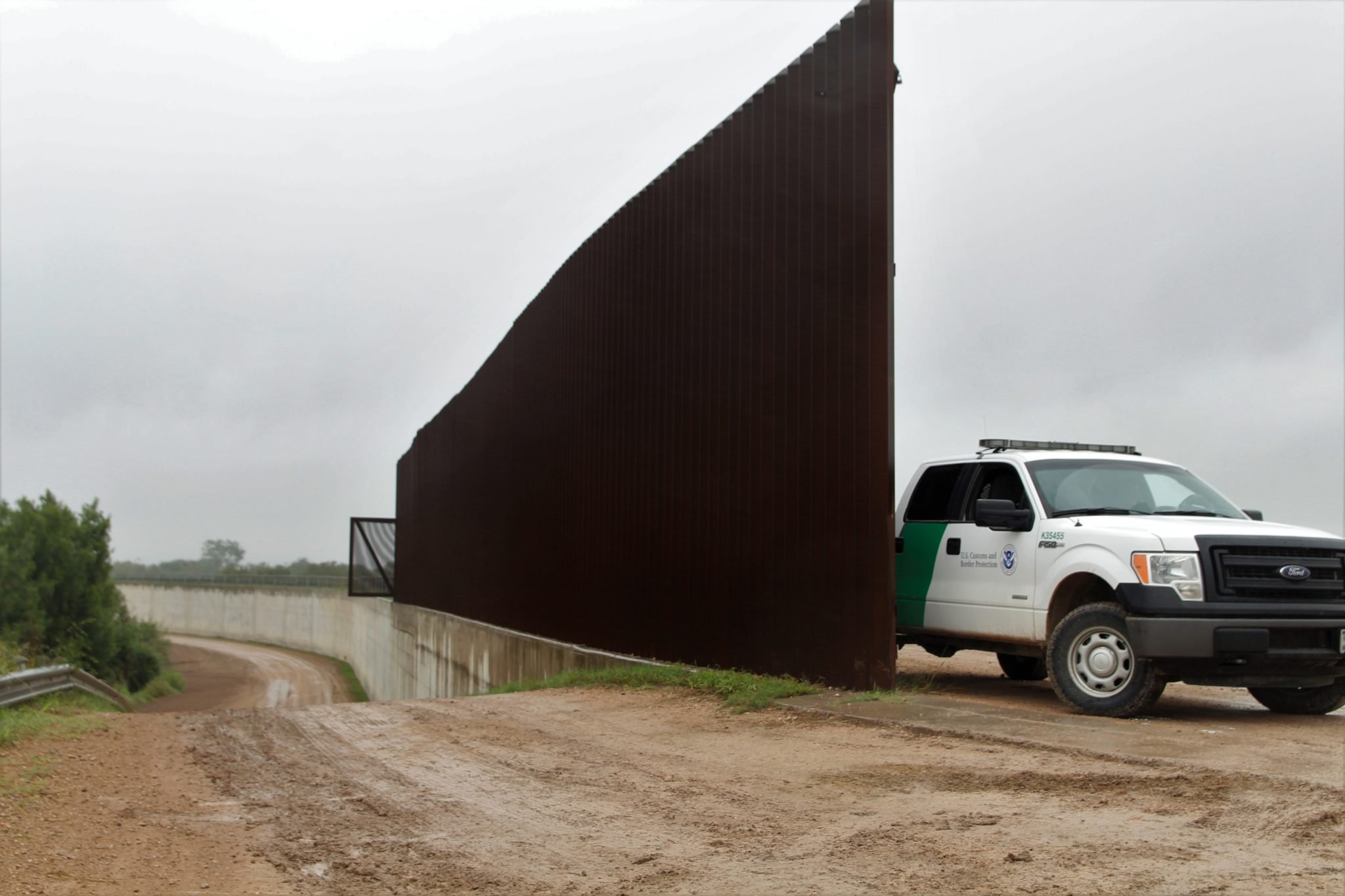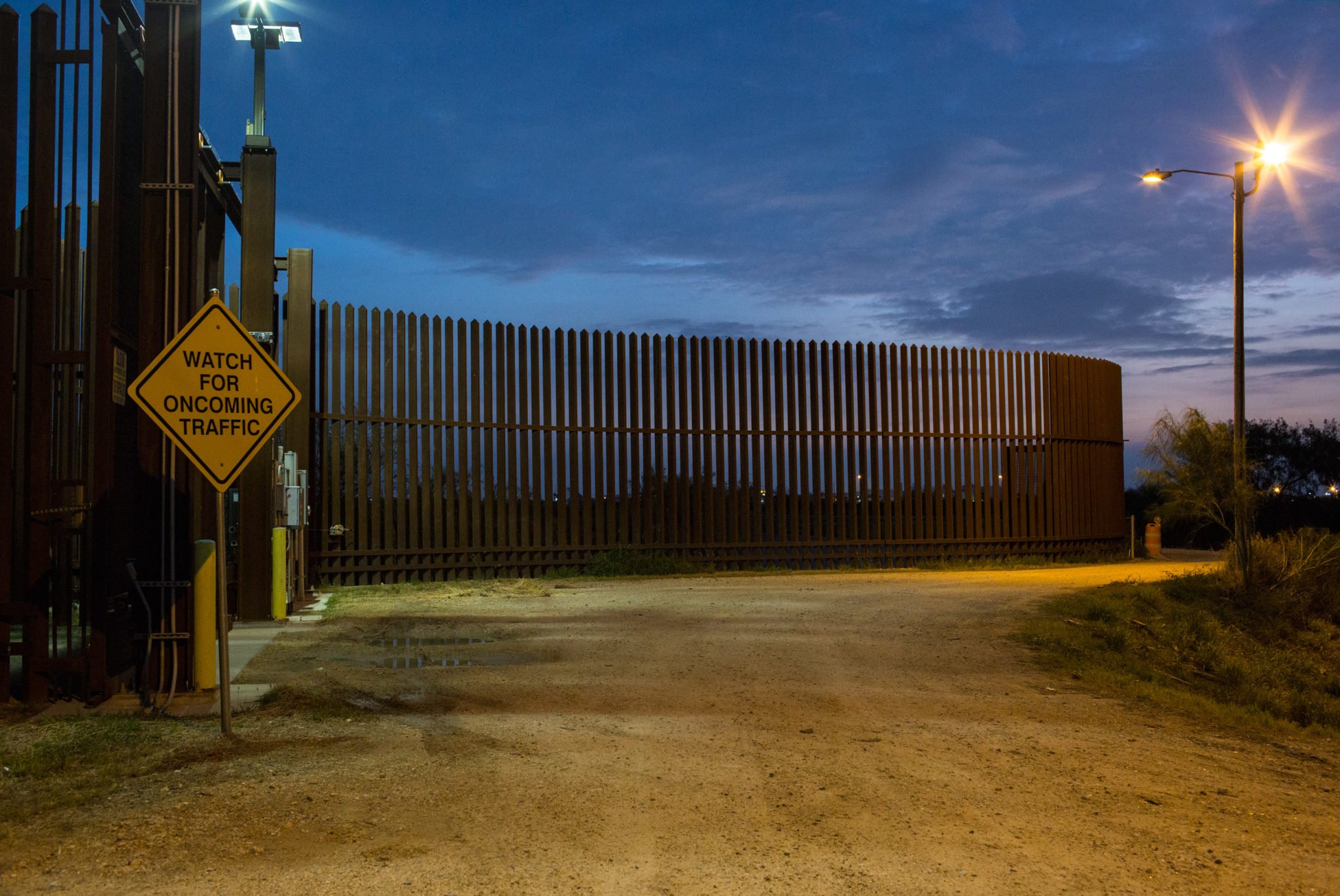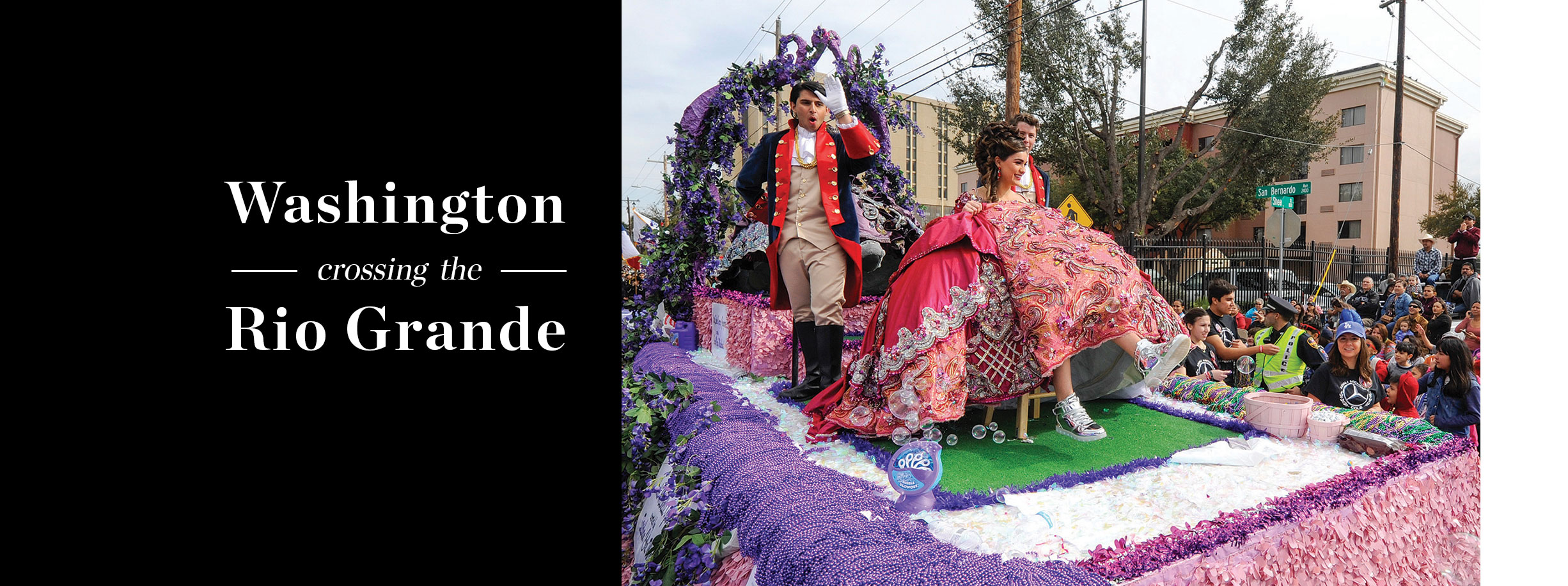
Performing patriotism in Laredo while Trump’s wall looms.
*
by Daniel Blue Tyx
June 10, 2019
At the midpoint of Laredo’s Juárez-Lincoln International Bridge, where the usual snarled lines of traffic were conspicuously absent, was a red carpet. Separated by a vacant concrete expanse about the length of a soccer field, dignitaries from two countries milled about, waiting. On the northern side, a retired customs broker portrayed America’s first president, decked out in a navy frock coat and tricorn hat, his long gray hair tied back in a ponytail. He jockeyed for position next to House Speaker Nancy Pelosi, resplendently attired in a bright red dress and matching heels. “Happy birthday!” Pelosi joked as the media scrambled for the anachronistic photo-op.
Across the way, a military band struck up Mexico’s national anthem. A tricolor flag, seemingly as long and broad as the bridge itself, was run up a hilltop flagpole. Then the scene was replicated on the U.S. side. A Border Patrol sergeant imbued “The Star-Spangled Banner” with a country twang, and a similarly huge flag arose above a gleaming new customs inspection facility. Former Texas Secretary of State David Whitley, then embroiled in a voter-suppression scandal targeting new citizens, delivered a keynote address. “Today, we celebrate more than just the pioneer of American democracy,” he proclaimed, before dusting off his high school Spanish. “We celebrate the coming together of one community en un abrazo.”
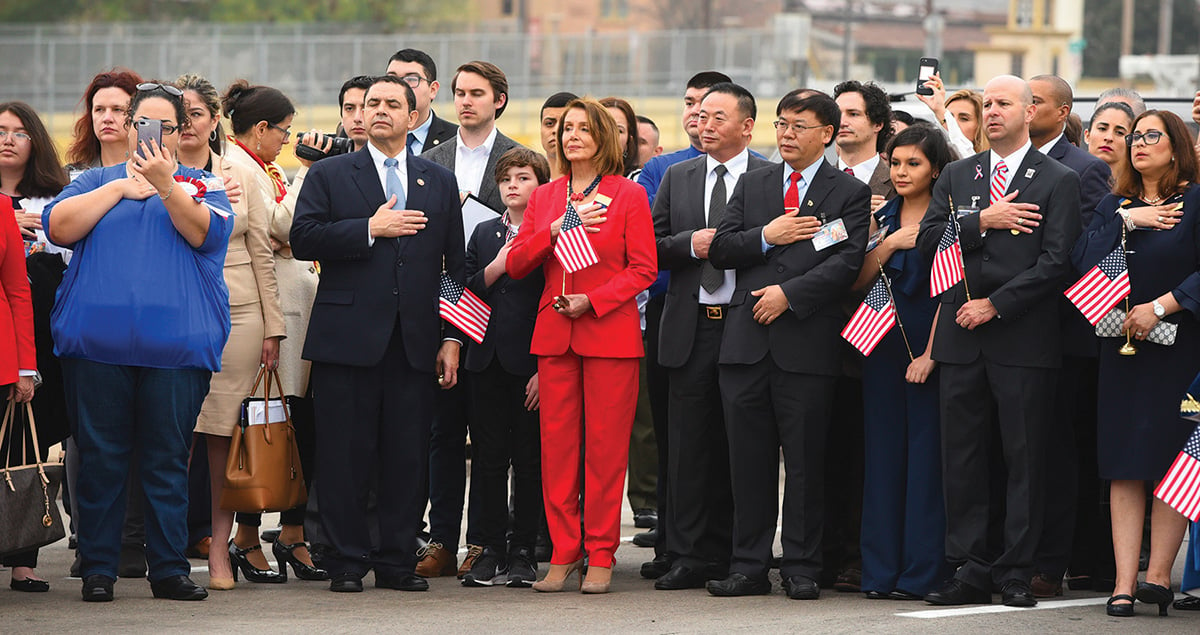
Two fair-haired, school-age children from Laredo, dressed in colonial attire and carrying miniature American flags, walked tentatively forward to the carpet. They were met there by a boy and girl of similar age from Nuevo Laredo, outfitted in multihued traditional costumes and bearing Mexican flags. The children exchanged well-practiced embraces, traded flags and posed for an official picture. Thus was marked another chapter in the 122-year history of the George Washington’s Birthday Celebration.
The abrazo ceremony, and the three-hour carnivalesque parade that follows, are the culmination of the country’s largest and oldest Washington’s Birthday commemoration, which began more than 30 years before the official observance at Mount Vernon. The monthlong celebration, in a border community that George Washington never visited or knew existed, draws 400,000 visitors and includes a colonial-themed debutante ball, a jalapeño-eating contest, concerts by Mexican and Tejano superstars and an air show.
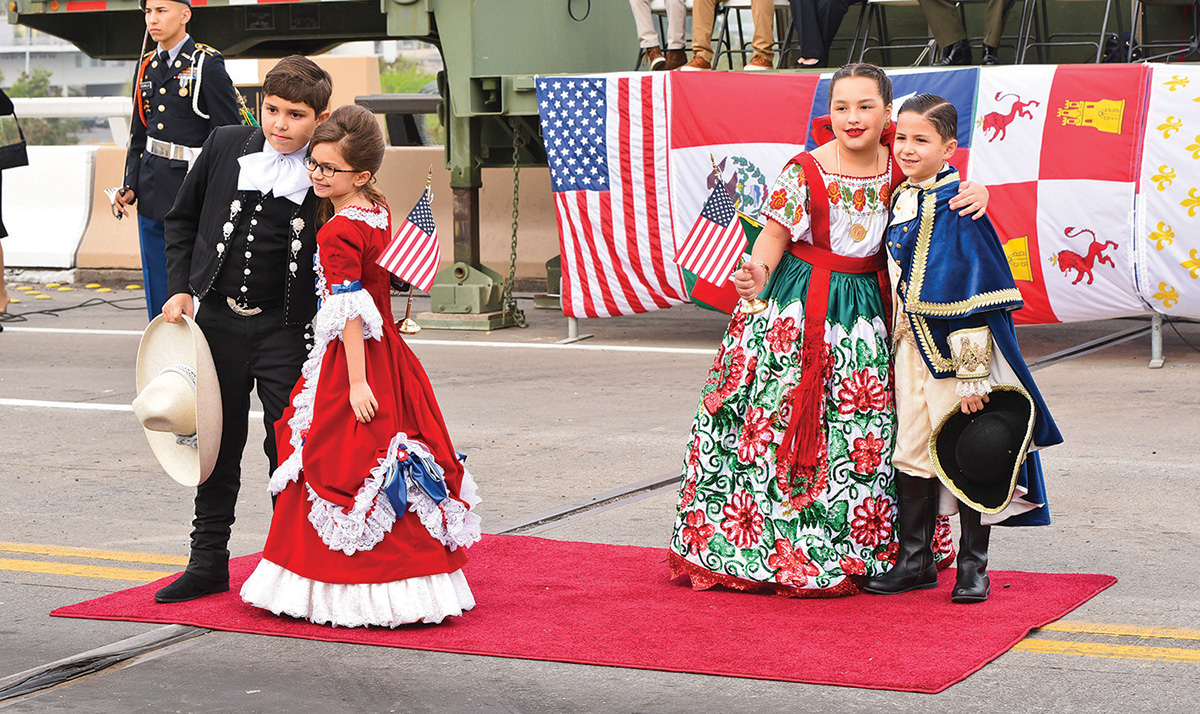
“Why is a community that is about 95 percent Latino celebrating George Washington in such a big way?” asked Carolina Ramos, a Laredo Community College professor who wrote her master’s thesis on the event, when we met in a hotel lobby decorated with ornate debutante ball dresses. Since its founding in 1898 by a fraternal group of white elites called the Improved Order of Red Men, the celebration has fused — at times uneasily — extravagant expressions of American patriotism with the heritage and identity of a binational community that residents call Los Dos Laredos. This year’s celebration, whose final weekend kicked off a week after President Donald Trump declared a national emergency along the U.S.-Mexico border, put that dichotomy into sharp relief. “It’s kind of amazing,” Ramos said. “But it also leads to so many questions.”
*
In 1898, the first Washington’s birthday celebration coincided with the 50th anniversary of the Treaty of Guadalupe-Hidalgo that annexed Laredo into the United States. It also marked the same anniversary of the founding of Nuevo Laredo, which was established by Laredo expatriates who wished to remain Mexican citizens. At the time, many dug up the bones of their ancestors and transported them to Mexican soil. A half-century later, despite an influx of Anglo businesspeople who arrived with the railroad, the region remained in many ways culturally Mexican. “It was our idea,” the event’s organizer, a German immigrant and businessman named Joseph Netzer, told the Laredo Times, “that we should inculcate in the minds of the Laredo people the importance of observing American holidays and arouse a patriotic feeling to America and American institutions.”
The inaugural program began with a mock battle. Members of the Improved Order of Red Men — all white men — donned war paint and headdresses and laid siege to the city, which was defended by city leaders. The spectacle concluded with a re-enactment of the Boston Tea Party, reusing many of the same costumes. In subsequent years, the battle was followed by a minstrel show in which the city’s light-skinned male elite, both Anglo and Tejano, parodied African Americans, Native Americans and women in blackface, redface and drag. Border historian Elliot Young writes, “Laredo’s Washington’s Birthday Celebration propagated a notion of ‘American’ border patriotism that incorporated Texas Mexicans and recognized Mexico’s national sovereignty, at the same time as it cast Indians and African Americans as savage outsiders against whom the nation could be defined.”
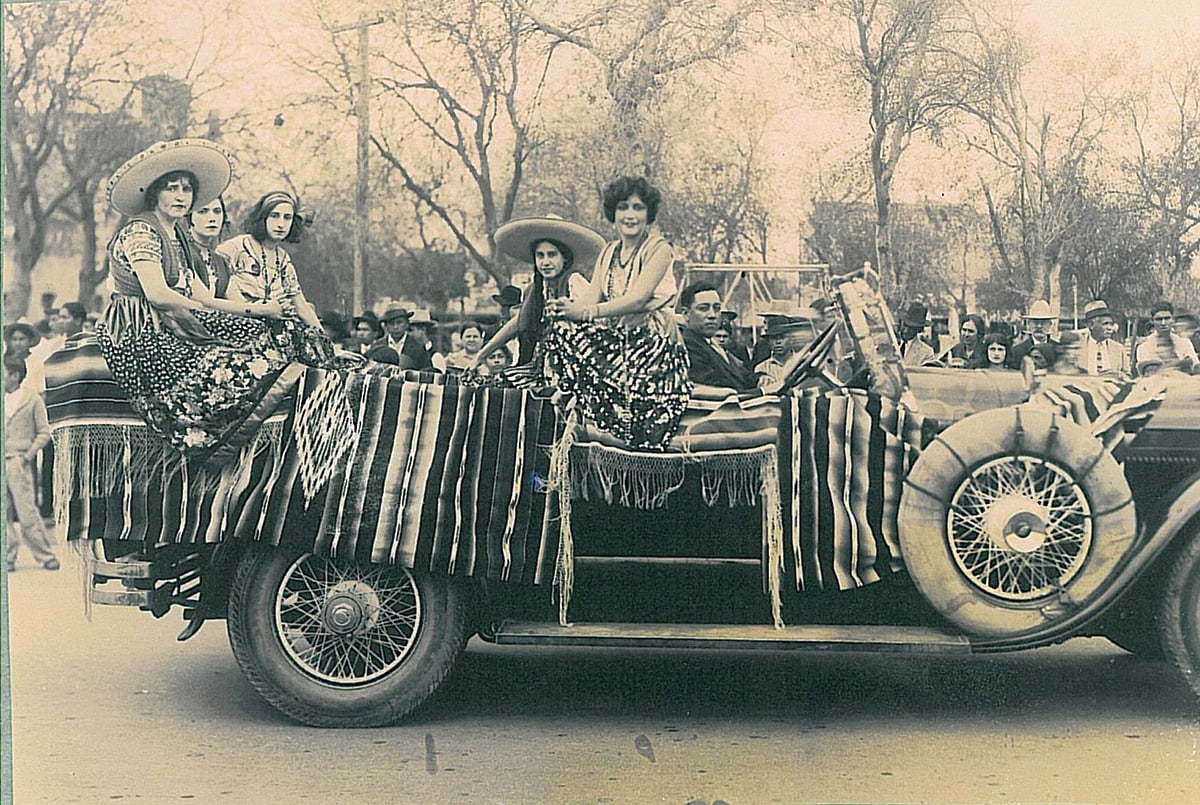
This year’s celebration was punctuated by another simulated siege. On February 22, Customs and Border Protection (CBP) agents staged a crowd-control exercise with concertina wire and smoke bombs at the midpoint of the bridge, in the exact spot where the abrazo ceremony would take place three days later. The exercise was in response to reports that a group of Central American asylum-seekers temporarily housed in a converted factory in Piedras Negras were to be transferred to Nuevo Laredo. It also came on the heels of President Trump’s national emergency declaration on February 15. Local officials learned soon thereafter that more than $3 billion of the emergency funds would be dedicated to wall construction in Laredo and its vicinity. According to the Border Patrol’s Laredo sector chief, the priority for construction will be Laredo’s urban core.
“I can’t get past the irony of the abrazo ceremony in the looming shadow of a wall,” Meg Guerra, the publisher of the online newspaper LareDOS, told me at the office of the Rio Grande International Study Center, an environmental advocacy group she helped found 25 years ago. A copy of the morning’s Laredo Times was on the conference table where we met, the front page dominated by a photo of border agents in riot gear, backgrounded by billowing smoke.
“Why is a community that is about 95 percent Latino celebrating George Washington in such a big way?”
Guerra traces her family roots on the Texas-Mexico border back many generations to ranchers who raised first sheep and then cattle. She fears the effect a wall would have on current ranchers, who stand to lose both property and river access for their animals. She says the wall also poses an existential threat to the city’s historic riverfront and its binational sense of identity. “The opposition is huge [in Laredo], but they haven’t stood up and spoken,” she said. “Patriotism mean exercising your voice even when no one else is doing so.”
Outside the study center’s office, volunteers were putting the final touches on a parade float marking the organization’s anniversary. Constructed on a banged-up flatbed trailer, it featured shiny metallic monarch butterflies, a photographic backdrop of the river and a yellow kayak bolted onto a wooden sawhorse.
One of the float-builders was Daniel Peralta, a retired Border Patrol officer who now devotes much of his spare time to organizing the Laredo Birding Festival. He had volunteered to drive a donated pickup to pull the float the next day. “The other infrastructure that the Border Patrol has besides a wall is sufficient for this area,” he told me. “Our river vistas attract a lot of people to this area for birding and sightseeing. It’s beautiful. All of that could be destroyed for a long time.”
*
By 1909, the theatrical battle had been replaced by a less violent ceremony in which the mayor handed over the key to the city to a young woman dressed as Pocahontas. The main attraction for visitors who traveled from across Texas in specially chartered railcars became the border itself. The abrazo ceremony was born, and Nuevo Laredo hosted bullfights, rodeos and traditional street parties. From the 1950s until 1976, the bridge was completely open during the celebration’s final weekend, with visitors moving freely between the two cities without ID. The events in Nuevo Laredo were discontinued after 9/11. Newer events like the Jalapeño Festival, headlined this year by Tejano and Norteño superstars Intocable and Los Tigres del Norte, have grown in popularity alongside longstanding, iconic traditions like the colonial debutante ball. Part of the festival is “definitely focused on the unity between these two cities,” Laredo Community College’s Ramos told me. “But in these same celebrations you see the segmentation of Laredo society.”
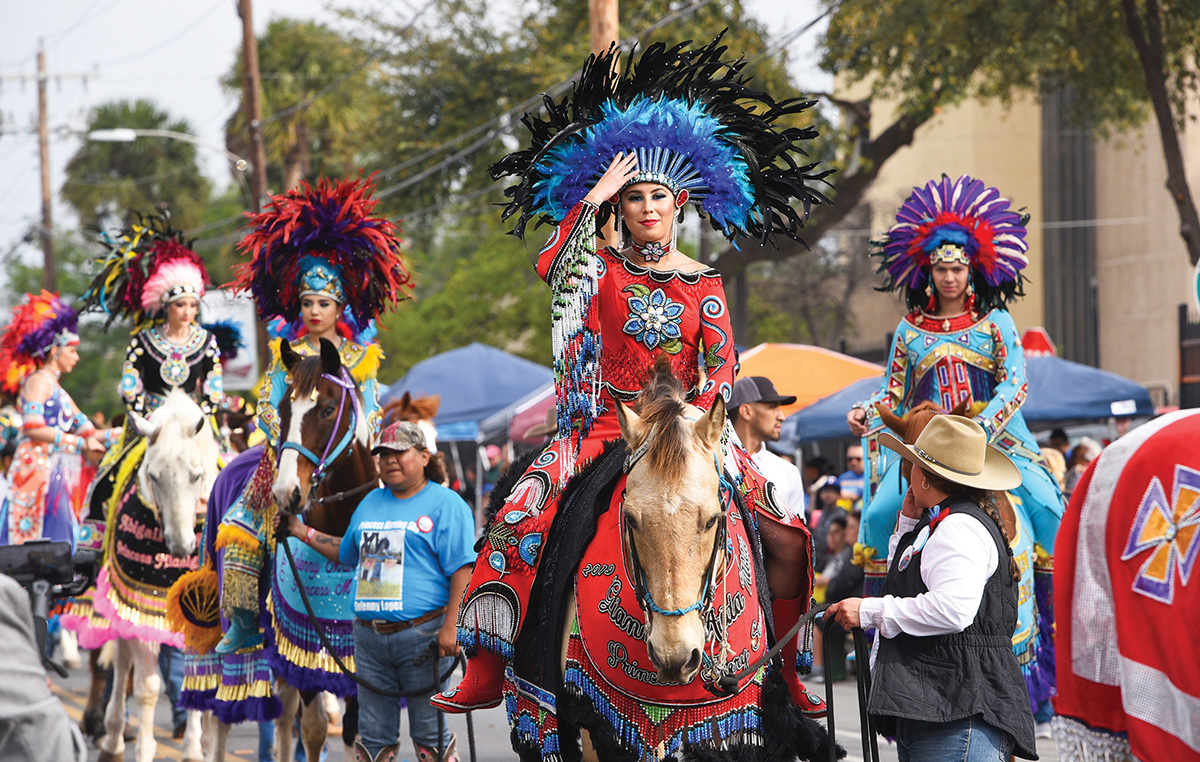
The debutante ball began in 1939, inspired by similar coming-of-age rituals across the American South. “It’s a formal gala where our daughters are presented to society in a very traditional debutante ball,” explained Society of Martha Washington President Tina Cerda when I visited the dress rehearsal. “But there’s a little spin: the theme is colonial, and so the boys are dressed in colonial costume, and the girls have on these beautiful colonial gowns.”
As we spoke, the six Marthas, as the debutantes are called, emerged from behind a red velvet curtain. The dresses were indeed spectacular, featuring traditional corseted waists and wide hoops bedazzled with thousands of shimmering hand-sewn beads. “It’s not the comfiest thing,” confided Alexandra Pellegrino-Guardado, a high school senior modeling a red dress with a cascade of silver beads down the center. She estimated the dress weighed 50 pounds. “But it means the world to me that I’m able to do this for my grandmother, and wear her jewelry, and represent her and my family.”
The following night, a full house of family members, friends and visiting dignitaries — including Nancy Pelosi, a fan of the event who has attended three times — took their seats at a recital hall on the campus of Texas A&M International University. “The year is 1795,” a narrator intoned, asking invitees to imagine they were attending an opera performance hosted by George and Martha Washington. Amid a flourish of trumpets, the founding couple processed on stage to welcome their guests.
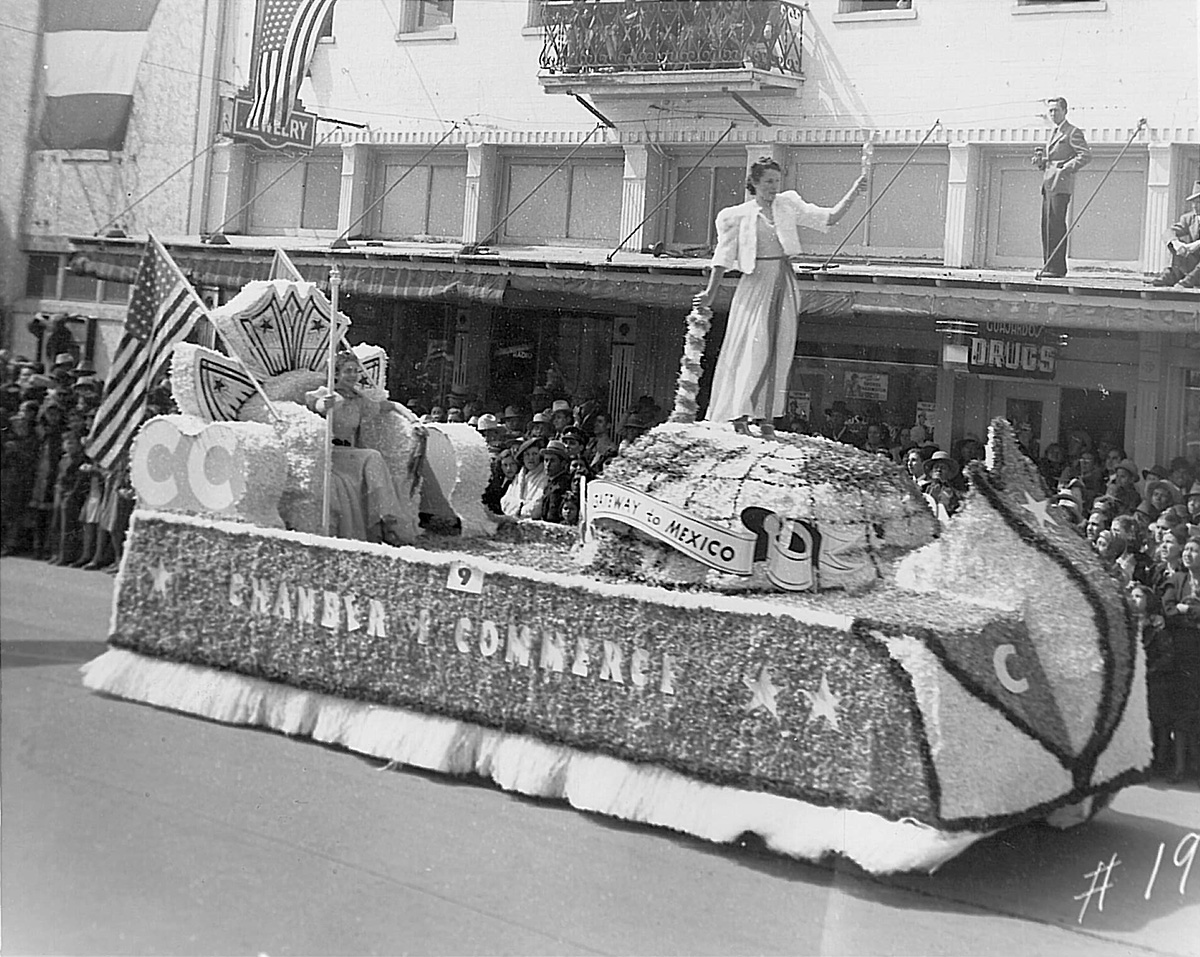
One by one, the Marthas appeared, arms levitating like clock hands at 4 and 8 o’clock to evade the capacious skirts. With the aid of hand-holding male escorts, they navigated a maze of pillars and steps in wordless slow motion. Meanwhile, the narrator introduced their assigned roles — according to this year’s script, the young people were portraying various relatives of George and Martha — followed by a detailed recounting of the debutantes’ family trees, with special mention of the parents and grandparents who likewise participated in the ball. Then came the climactic moment. As each Martha arrived at center stage, her escort helped her to her knees. She nearly disappeared into the shell of her dress before initiating a prolonged colonial bow that ended with her exquisitely coiffed hair hovering parallel to the stage. The crowd erupted in decidedly Texan whoops and hollers, welcoming her not only to adulthood, but also to full membership in Laredo’s most exclusive society.
The Society of Martha Washington comprises exactly 200 members. Most, including all of this year’s Marthas, are “legacy members” with mothers in the sorority. Non-legacy members are admitted only if there is an opening among the 200 elect, and then only if no legacy members are in line ahead of them. Cost is also a determining factor in membership. The price of the dresses is a closely guarded secret, but estimates I heard consistently ranged up to $30,000.
“I can’t get past the irony of the abrazo ceremony in the looming shadow of a wall.”
Many Laredoans I spoke with, especially young women, were keenly aware of the ball’s exclusivity. “A lot of what comes along with the Washington’s Birthday Celebration is elitism,” said Angie Bravo, a high school senior I spoke with after a mid-morning talk by Nancy Pelosi, which the congresswoman used to highlight her opposition to the national emergency.
“Unfortunately, a lot of people can’t join in because we don’t have the resources.”
Others were simply indifferent. Before the ball started, I walked down San Bernardo Avenue, where hundreds of spectators were already laying claim to prime parade-viewing spots. “Be prepared to be bored,” an off-duty police officer named Jorge Dovalina said when I mentioned I would be attending. Dovalina, who was sitting inside a camping tent with his wife and daughter, said the real fun was along the parade route, where people would play music, drink beer and grill until the wee hours of the morning.
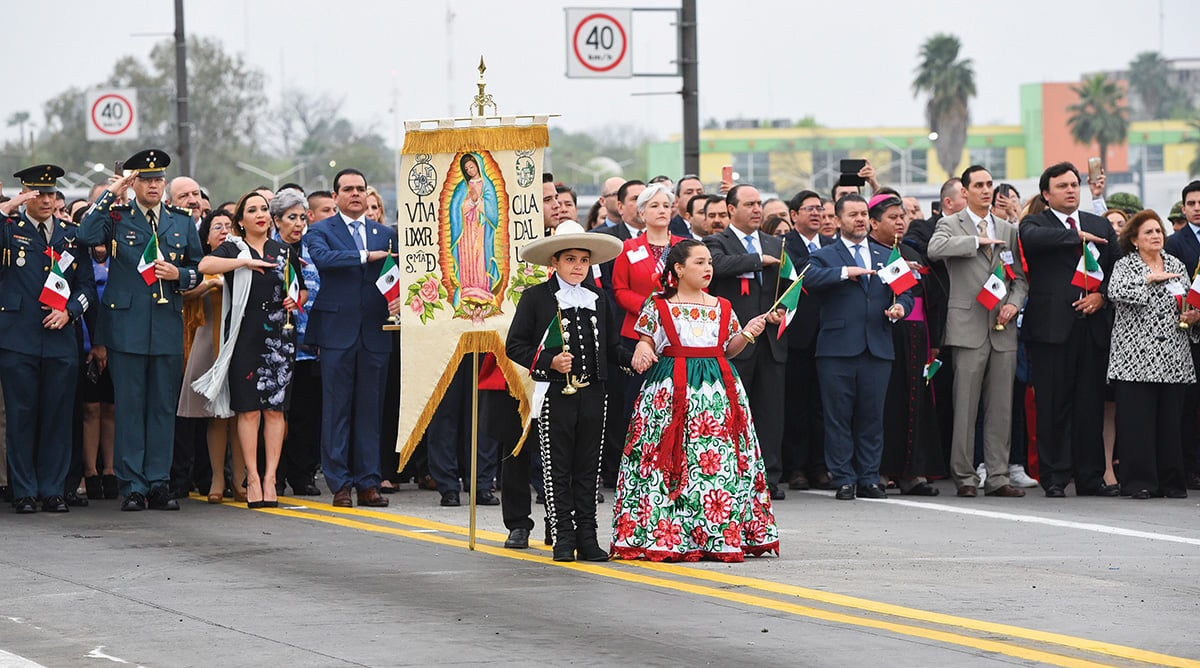
Just down the street, mechanic George Longoria said that his family has been camping out before the parade on the same street corner for 50 years. “We celebrate Washington’s Birthday here because we don’t have so many other things to celebrate,” he said. “That’s why [for] everything that happens here in Laredo, we try to go all out.”
The inaugural Washington’s birthday parade in 1898, like all the iterations since, showcased Laredo’s diversity while also projecting civic leaders’ preferred image of commercial success and law and order. “Laredo’s parade represented an ideal order for Laredo’s increasingly diverse populace,” the historian Elliot Young writes, “with everyone part of some corporate, clearly identifiable group, and, most importantly, under the supervision and close watch of the coercive apparatus of the state, the police, infantry, and cavalry.”
“A lot of what comes along with the Washington’s Birthday Celebration is elitism.”
This year’s parade featured more than 130 floats. There were marching bands, cheerleaders, the ROTC, the Sons of the American Revolution, the Shriners, lowriders, Aztec dancers, Lucha Libre wrestlers, LGBTQ pride, and a Selena impersonator in a purple jumpsuit from the local performing arts magnet school. Parade-watchers were pelted with Mardi Gras beads, candy and miniature Frisbees. Many floats had their own live DJs and sound systems. The Marthas, who rode two-by-two on three separate floats, were a highlight, especially for the children. “Show me your shoes!” kids began yelling from the instant they spotted the debutantes in the distance. In response, the Marthas lifted their elaborate skirts to reveal footwear ranging from rhinestone cowboy boots to robot-shaped slippers.
The Rio Grande International Study Center had been assigned float No. 122, among the last to start. Before they began, volunteers from RGISC and the Laredo Immigrant Alliance had unfurled two long black banners with white lettering. The banners read #wherestheemergency. Now, the marchers were growing increasingly nervous, fearful that parade organizers wouldn’t allow them to proceed.
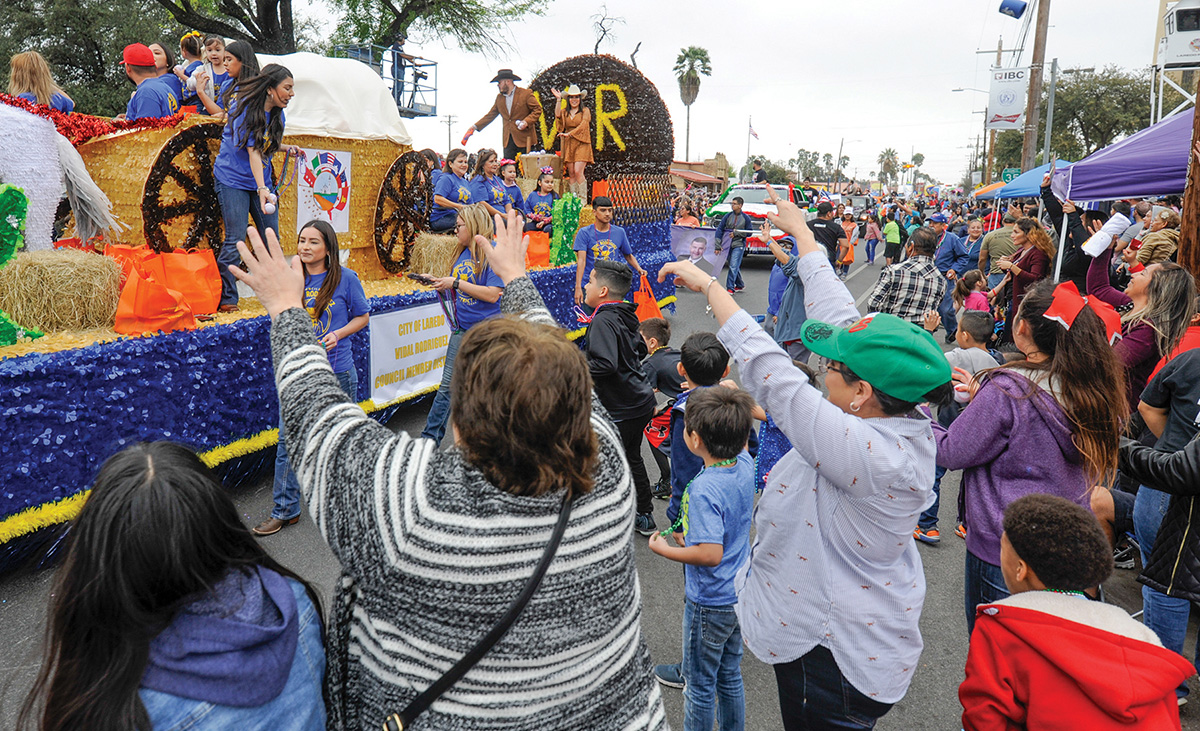
Just before they reached the grandstand, about a quarter mile from the start of the official route, an organizer did ask them to halt, but not for a reason anybody suspected. More floats were merging into the procession from a side street. The marchers had to wait — for the Border Patrol. Coincidentally, the study center float had been slotted directly behind the agency’s contingent of ATVs, SUVs, agents on horseback and a gunboat-in-tow. When the last of the lengthy caravan had passed, the marchers continued uninterrupted, the #wherestheemergency banner just a few dozen yards behind the last white-and-green government truck.
On the RGISC float, a makeshift sound system played “Twist and Shout.” Some spectators danced in their seats, while a few others ran into the street to high-five the banner-carriers. A volunteer handed out #wherestheemergency business cards with a link to a website with more information about the proposed wall. A Jolly Rancher candy was taped to each card. Over and over, I watched as kids swarmed to get the cards, removed the candy, briefly perused the contents and handed them to their parents.
One such set of parents was Leonardo and Jackie Rodriguez. Their older children were in the parade, they told me, but the younger ones were enjoying the show. When I asked what they thought about the cards, Leonardo didn’t miss a beat. “Our river is pretty contaminated, so I would consider that a national emergency,” he said with a straight face. He told me he was an Army veteran. A few years ago, he said, he’d served in the color guard at the abrazo ceremony. “I consider myself very patriotic,” he said. “Here in Laredo, our borders are secured. Our crime levels aren’t that high. We’re enjoying the parade, and everybody’s happy.”
